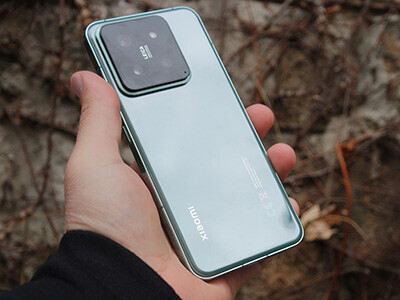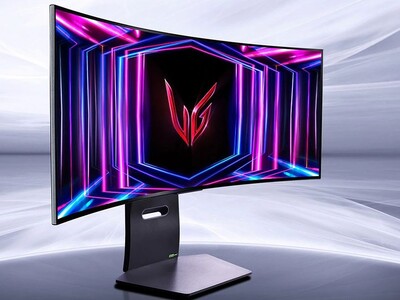Hirdetés
-


A Xiaomié lehet a Snapdragon 8 Gen 4-es elsőség
ma Több másik kínai telefon követheti ugyanezzel a chippel az év végéig.
-


LG 34GS95QE-B: OLED paneles, ívelt gamer monitor
ph Félmillió forintba kerül az LG új, 240 Hz-es gamer monitora. Megnéztük, mit tud!
-


Toyota Corolla Touring Sport 2.0 teszt és az autóipar
lo Némi autóipari kitekintés után egy középkategóriás autót mutatok be, ami az észszerűség műhelyében készül.
-

PROHARDVER!
Üdvözlet az Acer notebook topikban! Mielőtt kérdeznél ajánlott elolvasni az alábbi összefoglalót!!
Új hozzászólás Aktív témák
-

maximilian4
addikt
válasz
 maximilian4
#32385
üzenetére
maximilian4
#32385
üzenetére
All of this is wrong, except for the preventative measures. You have damaged, at a minimum, the anti-glare/anti-reflective coating. For an LCD screen, there is a strong chance that you have also damaged the front polarizer as well. For an LED screen (e.g., OLED, *not* LED backlit LCD), there is a somewhat lower chance that you have damaged the front glass.
The scratches can indeed be buffed out. The problem is that doing so would remove the anti-glare coating from the affected area, which will sharply contrast with the rest of the screen. In practice, that means you will have to polish the coating off the entire screen. This is easier said than done, since the coatings normally also include a high-hardness abrasion-resistant (AR) coating.
If you remove the AR coating, then polish out the screen (done by starting with high-grit polishing compound, then going through about six different grades of grit until you finally do a dozen passes with a finishing compound), you will have a crystal-clear laptop screen— with no anti-glare or AR coating. This will look awful, as it will reflect even weak light very strongly, and scratch very easily, so you will need to protect it. This would ideally be done by adding, big surprise, the surface coatings that were on it in the first place. This cannot be done without a proper lab; you WILL trap dirt, dust, lint, pollen, smoke, failure, and broken dreams under the coatings.
The second choice would be to use a very thin piece of coated borosilicate glass, such as Gorilla Glass. It is a serious pain in the butt to get this this stuff in arbitrary shapes and sizes. It is also somewhat heavy, at these sizes. Finally, it will add enough thickness that it may be a problem. It will, however, be hard enough to resist damage— however, if coated, the coatings may not be.
One compromise MIGHT be to get Abrasion Resistant Acrylic (“AR Acrylic”) laser-cut by TAP Plastics or similar. This is inexpensive and has very good optical properties, but is fragile with respect to drops and bends. Lexan (polycarbonate sheet) is much tougher, but scratches more easily, and has to be cut mechanically instead of by laser; unless you use a waterjet cutter, the edges will not be very smooth.
Finally, you might luck out if you can find a 3M Laptop Privacy Screen that fits your unit well. These have some anti-glare side-effects since they strongly reduce off-axis light. If you like those okay, you can consider polishing the screen down and using one of these as a makeshift anti-glare solution. This will, however, reduce the viewing angle (since that’s the whole point of the product), and reduce maximum brightness.
So, if possible, your best bet is going to be to get a laptop with a dead motherboard and swap screens. Beware of dead laptops on eBay— sometimes they’re fine, but often they are “graveyard” units, composed solely of failed components.
[ Szerkesztve ]
Maxi
Új hozzászólás Aktív témák
- Latitude 5400 27% 14" FHD IPS i5-8265U 8GB DDR4 256GB NVMe magyar vbill., gar
- HP EliteBook 840 G6 i5-8365U 16GB RAM 256GB SSD világító MAGYAR billentyűzet
- Lenovo Thinkpad L570, I5-6200U, 8GB, 240SSD, 15,6" FHD, AAM, 1év gari
- Dell Latitude 7410, I7-10610u, 16GB, 256GB NVME, EXC, FHD, AAM, 1év gari
- Dell Latitude 7410, I7-10610u, 16GB, 256GB NVME, EXC, FHD, AAM, 1év gari
- i-tec dokkoló USB4 Metal Docking station Dual 4K HDMI DP, PD 80W
- ASUS ROG ZEPHYRUS G16 RTX 4060, 1 év garancia
- ÚJSZERŰ Honor MagicBook Pro 16 (Ryzen 5 4600H, 16GB, 512GB, fémház)
- Fujitsu olcsó, jó laptop. Kishibás, szépséghibás..COM portos!
- Szeretnél egy megbízható laptopot a mindennapi feladatokhoz?









